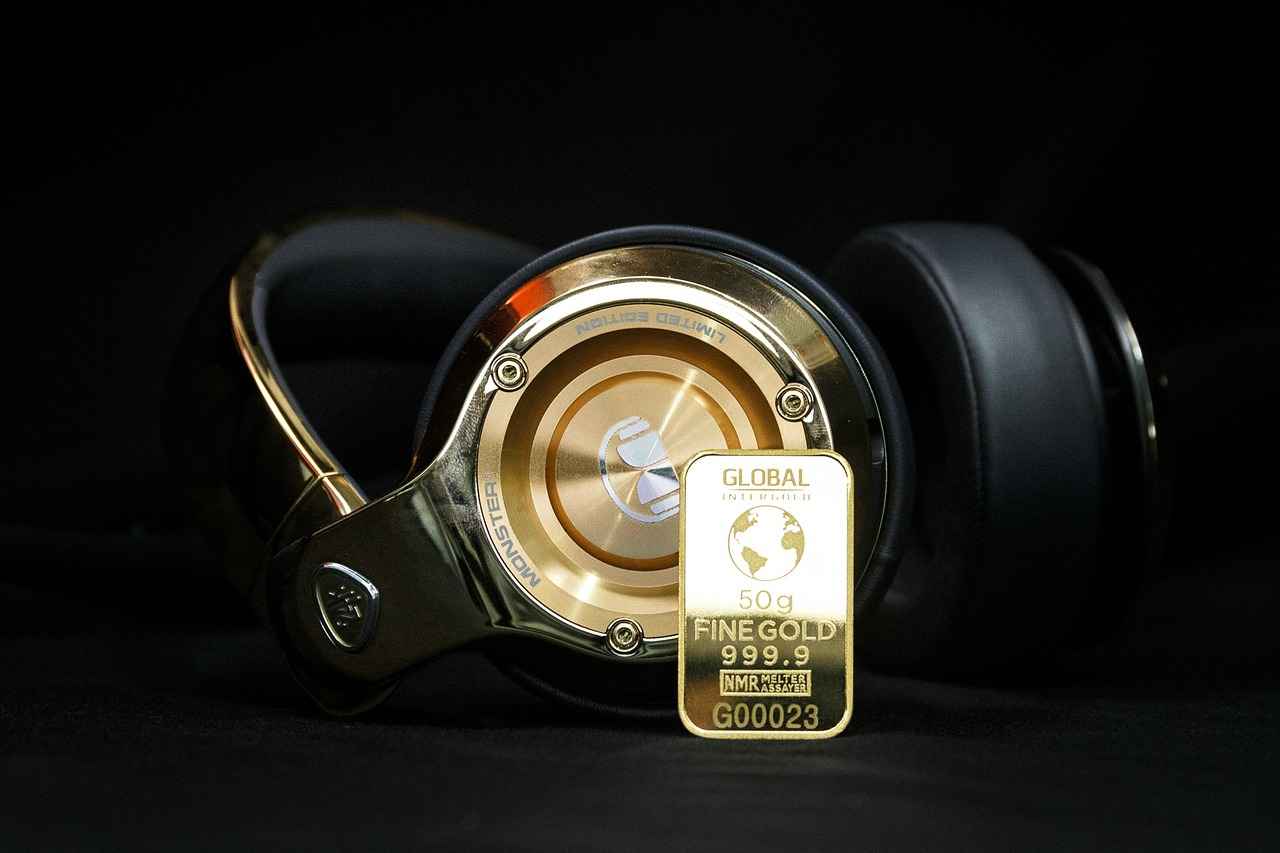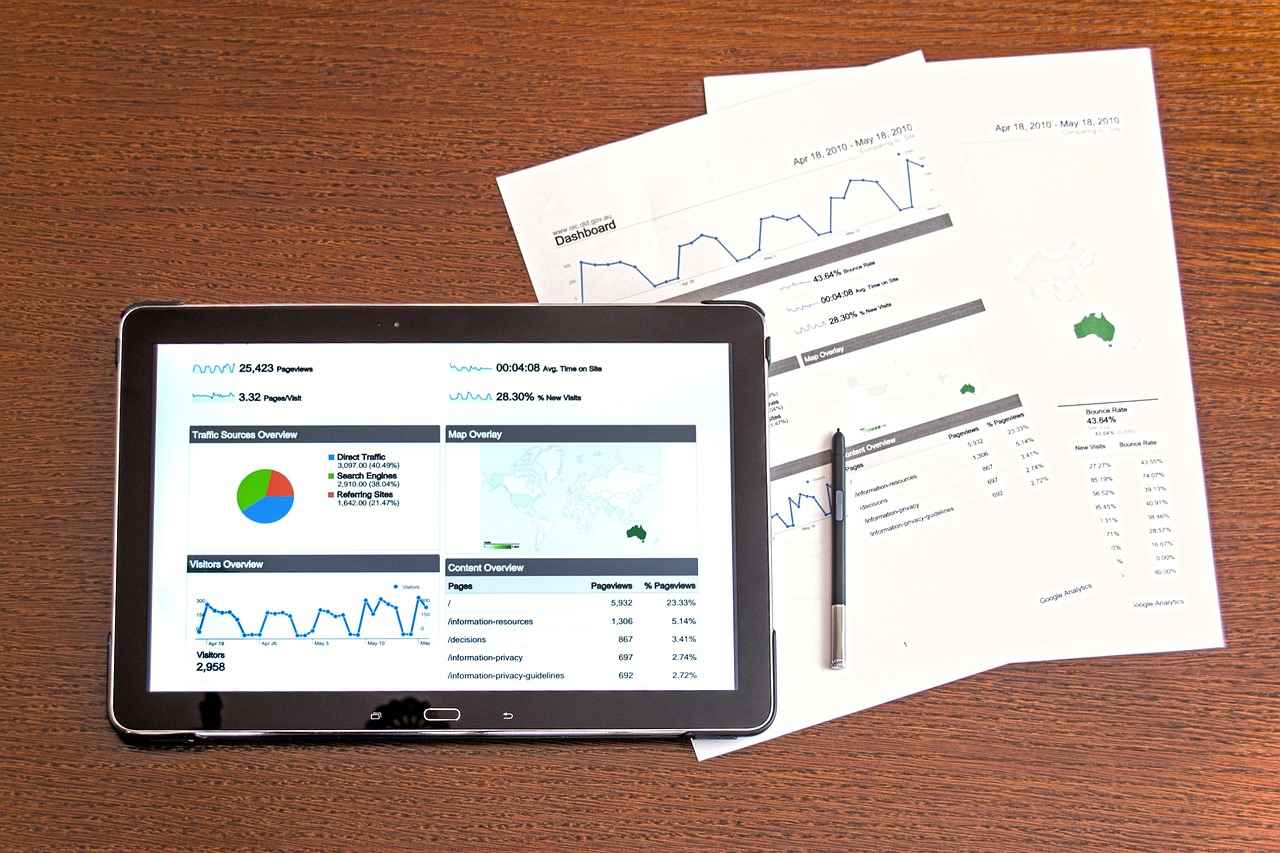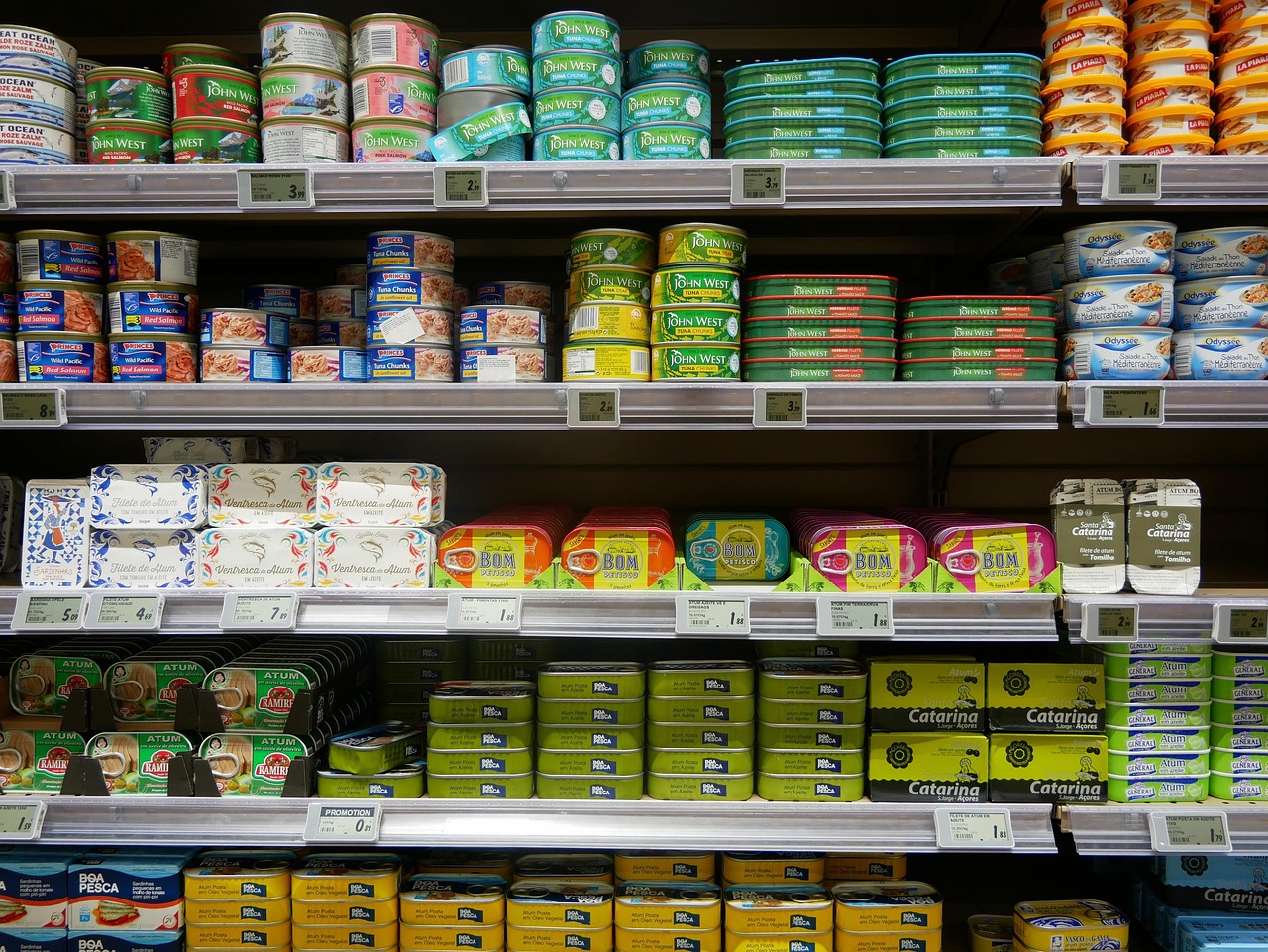This article serves as a comprehensive guide on how to effectively track gold and platinum prices, empowering you to make smart investment decisions. Understanding the dynamics of these precious metals is essential for any investor looking to enhance their portfolio.
Tracking gold and platinum prices is vital for investors, as these metals are often viewed as safe-haven assets. Their prices can reflect broader economic trends and market volatility, making it crucial to stay informed. By monitoring these prices, investors can better anticipate market shifts and make more strategic decisions.
There are numerous tools available for tracking precious metal prices. From mobile applications to online platforms, selecting the right tools can significantly enhance your investment strategy.
Mobile applications offer convenience and accessibility for tracking gold and platinum prices. Many apps provide real-time alerts, interactive charts, and tailored news updates to suit your investment needs.
- Price Alerts: Get notified when prices reach your target levels.
- Historical Data: Access past pricing trends to inform your decisions.
- User-Friendly Interface: Ensure easy navigation and quick access to information.
Some of the most popular mobile apps for tracking precious metal prices include Gold Price Live and Kitco. These apps are favored for their reliability and comprehensive features.
Online platforms and websites provide extensive resources for tracking gold and platinum prices. They often feature detailed market analyses, interactive charts, and expert insights that can guide your investment decisions.
Interpreting price trends is essential for making informed investment decisions. Understanding market indicators and analyzing historical data can help you predict future movements in gold and platinum prices.
Market indicators, such as inflation rates, currency strength, and geopolitical events, significantly influence gold and platinum prices. By recognizing these factors, you can enhance your investment strategy and make more informed decisions.
Analyzing historical data allows investors to identify patterns and trends over time. By studying past price movements, you can make more accurate predictions about future price behavior.
Several key factors influence gold and platinum prices, including supply and demand dynamics, economic conditions, and investor sentiment. Understanding these variables is vital for any investor.
The supply and demand for gold and platinum greatly impact their market prices. Factors such as mining output and industrial demand play critical roles in price fluctuations.
Economic indicators and geopolitical events can lead to price volatility. Staying informed about global economic trends and political developments can help you anticipate potential price changes.
Setting up price alerts is an effective way to keep track of gold and platinum price movements. Alerts can assist you in making timely investment decisions based on your target prices.
Most mobile apps allow users to set customized price alerts. This feature ensures you receive notifications when prices reach your desired levels, facilitating prompt action.
Web-based alert systems also provide options for tracking price changes. Many financial websites offer free alert services that can be tailored to your specific investment goals.
Investing in gold and platinum carries inherent risks. Understanding these risks can help you make informed decisions and develop strategies to mitigate potential losses.
Market volatility can lead to significant price fluctuations in gold and platinum. Investors should be prepared for sudden changes in market conditions that may affect their investments.
Liquidity risks may arise when attempting to sell gold and platinum assets. Understanding market demand and timing your sales can help minimize potential losses during adverse market conditions.
Diversifying your precious metals portfolio is essential for managing risk. A well-rounded portfolio can enhance stability and potential returns over time.
Incorporating various types of metals, such as silver and palladium, can provide additional diversification benefits. Each metal has unique characteristics and market dynamics.
Balancing your investments across different asset classes and precious metals can help mitigate risks. Regularly reviewing and adjusting your portfolio is crucial for long-term success.

Why Track Gold & Platinum Prices?
Understanding the significance of tracking gold and platinum prices is crucial for investors. These precious metals often act as safe-haven assets, providing a reliable store of value during times of economic uncertainty. Their prices can reflect broader economic trends and market volatility, making them essential indicators for savvy investors.
Investors track gold and platinum prices to gain insights into market dynamics and to make informed decisions regarding their portfolios. Gold, often seen as a hedge against inflation, tends to rise in value when the economy falters or when inflation rates increase. Conversely, platinum, which has industrial applications, can be influenced by manufacturing demand and economic growth. Understanding the interplay between these two metals can provide valuable context for investment strategies.
Tracking the prices of gold and platinum allows investors to spot trends and anticipate market movements. By monitoring these trends, investors can strategically time their purchases or sales, maximizing potential profits while minimizing risks. For example, a sudden spike in gold prices may indicate heightened market uncertainty, prompting investors to consider reallocating their assets.
Numerous tools are available to assist investors in tracking precious metal prices. From mobile apps to dedicated financial websites, these resources provide real-time updates and analysis. Utilizing these tools can significantly enhance an investor’s ability to respond to market changes promptly.
- Mobile Applications: Many apps offer user-friendly interfaces that allow investors to track prices, set alerts, and access market news on-the-go.
- Web-Based Platforms: Websites like Kitco and GoldPrice provide comprehensive market analyses, historical data, and expert opinions.
Economic indicators play a vital role in influencing the prices of gold and platinum. Factors such as inflation rates, interest rates, and geopolitical events can lead to significant price fluctuations. For instance, during periods of high inflation, gold often sees increased demand as investors seek to preserve their wealth. Conversely, strong economic growth may reduce demand for safe-haven assets, impacting their prices negatively.
Analyzing historical data allows investors to identify patterns and trends that can inform future predictions. By studying past price movements, investors can gain insights into how gold and platinum have reacted to similar economic conditions in the past. This analysis can provide a framework for anticipating future price behavior, aiding in more informed investment decisions.
While investing in gold and platinum can be lucrative, it is not without risks. Market volatility can lead to sudden price changes, and liquidity risks may arise when trying to sell these assets. Understanding these risks is essential for developing strategies to mitigate potential losses.
Setting up price alerts is a practical way to stay informed about fluctuations in gold and platinum prices. Many mobile apps and online platforms offer this feature, allowing investors to receive notifications when prices reach their desired levels. This capability ensures that investors can act swiftly in response to market movements.
In summary, tracking gold and platinum prices is essential for any investor looking to navigate the complexities of the precious metals market effectively. By utilizing the right tools, understanding economic indicators, and being aware of the associated risks, investors can make informed decisions that align with their financial goals.

What Are the Best Tools for Tracking Prices?
When it comes to investing in precious metals like gold and platinum, staying updated on their prices is essential. With numerous tools available, investors can enhance their strategies and make informed decisions. This article explores the best tools for tracking prices, focusing on mobile apps, online platforms, and key features to consider.
Investors have access to a variety of tools designed specifically for tracking precious metal prices. These tools range from mobile applications to comprehensive online platforms, each offering unique features that cater to different investment needs. Utilizing these tools can significantly improve your investment strategy by providing real-time updates and valuable insights.
Mobile applications have revolutionized how investors track precious metal prices. They offer convenience and accessibility, allowing users to monitor prices on the go. Many apps provide features such as:
- Price Alerts: Set notifications for specific price points.
- Live Charts: View real-time price movements and historical data.
- News Updates: Receive the latest news impacting the precious metals market.
Some popular mobile apps include Gold Price Live and Kitco, both known for their reliability and comprehensive features. These apps are user-friendly and provide essential information to help investors make timely decisions.
In addition to mobile apps, online platforms and websites serve as valuable resources for tracking gold and platinum prices. These platforms often offer:
- Market Analysis: In-depth analyses of market trends and price movements.
- Expert Insights: Articles and reports from industry experts to guide investment strategies.
- Interactive Charts: Tools for visualizing price trends over various timeframes.
Websites like Investing.com and MarketWatch provide extensive resources, including detailed charts and market news, enabling investors to stay informed about market fluctuations and make educated decisions.
When selecting tools for tracking precious metal prices, consider the following features to ensure optimal performance:
- User-Friendly Interface: A simple layout enhances usability, making it easier to access vital information.
- Customization Options: The ability to personalize alerts and notifications based on your investment preferences.
- Data Accuracy: Ensure the platform provides accurate and up-to-date pricing information.
By focusing on these features, investors can choose the right tools that align with their specific needs and investment strategies.
To maximize the benefits of these tracking tools, integrate them into your overall investment strategy. Regularly monitor price trends and use alerts to stay informed about significant changes. Additionally, consider combining insights from multiple platforms to gain a comprehensive understanding of market dynamics.
In conclusion, the right tools for tracking gold and platinum prices can significantly enhance your investment experience. By leveraging mobile apps and online platforms, investors can stay informed, make timely decisions, and ultimately achieve their financial goals.
Mobile Apps for Price Tracking
In today’s fast-paced world, mobile applications have revolutionized the way we manage investments, particularly in precious metals like gold and platinum. These apps not only offer convenience but also provide essential tools for tracking market fluctuations, making them invaluable for both novice and experienced investors. Below, we explore the various features and benefits that mobile apps offer for tracking gold and platinum prices.
Mobile apps are designed to be user-friendly and accessible, allowing investors to monitor precious metal prices anytime, anywhere. This level of accessibility is crucial for making timely investment decisions, especially in a volatile market where prices can change rapidly.
- Real-Time Price Updates: Many apps provide real-time data, ensuring you are always informed of the latest market prices.
- Price Alerts: Set customized alerts to notify you when gold or platinum reaches your target price, enabling prompt action.
- Interactive Charts: Visual representations of price trends help you analyze historical data and make informed predictions.
- News and Insights: Access to market news and expert analyses can enhance your understanding of price movements and trends.
Several mobile applications have gained popularity among investors due to their reliability and comprehensive features. Here are some of the most widely used:
- Gold Price Live: This app provides real-time gold prices, historical data, and customizable alerts tailored to your investment strategy.
- Kitco: Known for its extensive market analysis, Kitco offers live price updates and a community forum for investor discussions.
- CoinStats: Although primarily a cryptocurrency tracking app, CoinStats includes features for tracking precious metals alongside digital assets.
When selecting a mobile app for tracking gold and platinum prices, consider the following factors:
- User Interface: A simple and intuitive interface can significantly enhance your experience, making it easier to navigate and access information.
- Customization Options: Look for apps that allow you to tailor alerts and notifications based on your investment preferences.
- Reputation and Reviews: Research user reviews and ratings to gauge the app’s reliability and effectiveness in providing accurate market data.
To maximize the benefits of mobile apps, integrate them into your overall investment strategy. Use the real-time data and alerts to make informed decisions, and combine this information with your analysis of market trends and economic indicators. This holistic approach can enhance your ability to navigate the complexities of investing in precious metals.
In summary, mobile applications have become indispensable tools for tracking gold and platinum prices. By leveraging their features, investors can stay informed, respond quickly to market changes, and ultimately make smarter investment decisions. Whether you are a seasoned investor or just starting, utilizing mobile apps can significantly enhance your investment journey.
Features to Look For in Apps
When it comes to investing in precious metals like gold and platinum, having the right tools at your fingertips is essential. One of the most effective ways to stay informed about market fluctuations is through mobile applications designed specifically for price tracking. Below are some key features to consider when selecting a mobile app for tracking gold and platinum prices.
- Price Alerts: Look for apps that allow you to set customized price alerts. This feature enables you to receive notifications when prices reach your desired levels, ensuring you can act promptly on investment opportunities.
- User-Friendly Interface: A clean and intuitive interface is crucial for efficient navigation. An app that is easy to use will help you access the information you need quickly, making it easier to track prices and make informed decisions.
- Historical Data: Access to historical price data is invaluable for analysis. Apps that provide charts and graphs displaying past price movements can help you identify trends and make predictions about future price behavior.
- Real-Time Updates: Ensure the app offers real-time price updates. This feature is essential for making timely investment decisions, especially in a volatile market.
- Market News and Analysis: Some apps come equipped with news feeds and market analysis. Staying updated with the latest news can help you understand the factors influencing price changes, such as economic indicators and geopolitical events.
- Portfolio Management Tools: If you are serious about investing, look for apps that include portfolio management features. These tools can help you track your investments, assess performance, and make necessary adjustments.
- Multi-Metal Tracking: Consider apps that allow you to track multiple precious metals, not just gold and platinum. This feature can provide a broader perspective on market trends and help diversify your investments.
In addition to these features, it’s also wise to read user reviews and check ratings before committing to a particular app. A well-rated app is often an indicator of reliability and user satisfaction.
By carefully evaluating these features, you can select a mobile app that not only meets your tracking needs but also enhances your overall investment strategy. Remember, the right tools can make a significant difference in your investment journey, providing you with the insights needed to navigate the complexities of the precious metals market.
Popular Mobile Apps
In today’s fast-paced world, tracking the prices of precious metals like gold and platinum is essential for savvy investors. With the rise of technology, numerous mobile applications have emerged to help users monitor these prices effortlessly. This section will delve into some of the most popular mobile apps available for tracking precious metal prices, highlighting their features and benefits.
Mobile apps offer a convenient way to stay updated on the fluctuating prices of gold and platinum. They allow investors to access real-time data from anywhere, making it easier to make informed decisions. Furthermore, many of these apps come equipped with features that enhance user experience and investment strategies.
When selecting a mobile app for tracking precious metal prices, consider the following features:
- Real-Time Price Updates: Ensure the app provides live updates to keep you informed about market changes.
- Price Alerts: Look for apps that allow you to set customized alerts for specific price points.
- User-Friendly Interface: A simple and intuitive design can enhance your overall experience.
- Historical Data: Access to past price trends can help you make better predictions.
- Market News: Stay updated with the latest news and analyses that could impact precious metal prices.
Here are some of the most popular mobile apps that investors rely on:
- Gold Price Live: This app provides real-time gold prices, charts, and historical data. Its user-friendly interface and customizable alerts make it a favorite among investors.
- Kitco: Known for its reliability, Kitco offers comprehensive market analysis, price tracking for various metals, and timely news updates. The app’s features cater to both novice and experienced investors.
- Gold Tracker: This app focuses on gold prices specifically, providing users with detailed charts and price alerts. Its minimalist design allows for easy navigation.
- Silver Price: For those interested in silver along with gold, this app tracks silver prices alongside gold, offering a broader perspective on precious metal investments.
- Bloomberg: While not solely focused on precious metals, Bloomberg’s app provides extensive financial news, including updates on gold and platinum prices, making it a valuable resource for investors.
To make the most out of these mobile apps, consider the following tips:
- Set Up Alerts: Utilize the price alert feature to notify you when prices reach your desired levels.
- Regularly Check Market News: Stay informed about global economic events that could affect precious metal prices.
- Analyze Historical Trends: Use the historical data feature to identify patterns that may assist in predicting future price movements.
In conclusion, the use of mobile apps for tracking precious metal prices has revolutionized the way investors engage with the market. By leveraging the features offered by these applications, investors can enhance their decision-making process and stay ahead in the dynamic world of precious metals.
Online Platforms and Websites
In the digital age, tracking gold and platinum prices has never been easier, thanks to a plethora of online platforms and websites dedicated to providing real-time data and insights. For investors, these resources are invaluable for making informed decisions in the ever-fluctuating market of precious metals.
Online platforms offer numerous advantages for tracking gold and platinum prices. They provide access to comprehensive market analyses, interactive charts, and expert opinions, all designed to help investors understand the current market landscape. With these tools, investors can:
- Access Real-Time Data: Online platforms update prices frequently, allowing investors to stay informed about market changes.
- Analyze Historical Trends: Many websites offer historical data that can help investors spot trends over time, enhancing their decision-making process.
- Receive Expert Insights: Access to articles and reports from financial experts can provide valuable context around price movements.
Several online platforms have gained a reputation for reliability and accuracy in tracking precious metal prices. Some of the most popular include:
- Kitco: Known for its extensive resources, Kitco provides live prices, historical data, and insightful articles.
- GoldPrice.org: This site offers real-time gold and platinum prices along with charts that are easy to interpret.
- Investing.com: A comprehensive financial platform that covers a wide range of investment options, including precious metals.
Market analysis on these platforms often includes:
- Technical Analysis: Charts and indicators help investors identify trends and potential entry or exit points.
- Fundamental Analysis: Insights into economic factors that impact gold and platinum prices, such as inflation and currency strength.
- News Updates: Real-time news alerts regarding geopolitical events and economic reports that could affect market stability.
Most online platforms allow users to set up custom price alerts. This feature ensures that investors are notified when prices reach their desired levels, allowing for prompt action. Custom alerts can be set based on:
- Specific price points
- Percentage changes
- Market news updates
For those new to investing in precious metals, many platforms offer educational resources, including:
- Tutorials: Step-by-step guides on how to use the platform effectively.
- Webinars: Live sessions with experts discussing market trends and investment strategies.
- Community Forums: Spaces where investors can share experiences and tips.
When selecting an online platform, consider factors such as:
- User Interface: A clean and intuitive design can enhance your experience.
- Mobile Accessibility: Many investors prefer platforms that offer mobile apps for on-the-go tracking.
- Customer Support: Reliable customer service can be crucial, especially for beginners.
In conclusion, online platforms and websites are essential tools for anyone looking to track gold and platinum prices effectively. By utilizing these resources, investors can enhance their understanding of the market, make informed decisions, and ultimately, achieve their investment goals.

How to Interpret Price Trends?
Understanding the dynamics of precious metals like gold and platinum is crucial for investors looking to navigate the complexities of the market. Interpreting price trends is not just about observing numbers; it involves analyzing various factors that influence these trends and making informed decisions based on this analysis.
Interpreting price trends allows investors to make strategic decisions. By recognizing patterns and understanding the underlying factors driving price changes, investors can better position themselves to capitalize on market movements. This is especially important in the volatile world of precious metals, where prices can fluctuate dramatically based on economic and geopolitical events.
Several market indicators play a significant role in the pricing of gold and platinum:
- Inflation Rates: Higher inflation often drives investors towards gold as a hedge against currency devaluation.
- Currency Strength: The value of the US dollar inversely affects gold prices; a weaker dollar typically leads to higher gold prices.
- Geopolitical Events: Political instability can create uncertainty, prompting investors to flock to safe-haven assets like gold and platinum.
Analyzing historical data is essential for identifying long-term trends. By studying past price movements, investors can gain insights into how gold and platinum may behave under similar future conditions. For instance, examining price charts over the last decade can reveal patterns that coincide with economic downturns or periods of high inflation.
Utilizing tools such as moving averages or regression analysis can help investors identify whether a price trend is likely to continue or reverse. This analytical approach enables a more nuanced understanding of market behavior.
Investor sentiment plays a crucial role in price trends. Market psychology can lead to irrational behavior, causing prices to rise or fall based on fear or greed rather than fundamental factors. Tracking sentiment through surveys or social media can provide additional context to price movements.
Once you have a grasp of the factors influencing price trends, the next step is to apply this knowledge to your investment strategy. Here are some practical tips:
- Set Target Prices: Based on your analysis, establish target prices for buying or selling.
- Diversify Investments: Consider diversifying your portfolio by including both gold and platinum, as well as other assets.
- Stay Updated: Regularly monitor news and market reports to stay informed about factors that could influence prices.
While interpreting price trends can enhance your investment strategy, it is essential to acknowledge the risks involved. Market volatility, liquidity issues, and sudden geopolitical events can all impact your investments. Being aware of these risks allows you to develop strategies to mitigate potential losses.
In summary, interpreting price trends in gold and platinum is a multifaceted process that requires a keen understanding of various market indicators, historical data analysis, and psychological factors. By employing these strategies, you can make more informed investment decisions that align with your financial goals.
Understanding Market Indicators
Understanding the dynamics of the precious metals market is essential for any investor looking to make informed decisions. Among the various factors that influence the prices of gold and platinum, market indicators play a pivotal role. This section delves into how these indicators, including inflation rates, currency strength, and geopolitical events, impact the value of these precious metals.
Market indicators are statistical figures that provide insights into the economic environment. They help investors gauge the overall health of the economy and predict future trends. Key indicators that significantly influence gold and platinum prices include:
- Inflation Rates: High inflation often leads to increased demand for gold and platinum as investors seek to protect their purchasing power.
- Currency Strength: A weak currency can boost the prices of gold and platinum, as these metals are typically priced in U.S. dollars. When the dollar weakens, it takes more dollars to purchase the same amount of gold or platinum.
- Geopolitical Events: Political instability or conflict can drive investors towards safe-haven assets like gold and platinum, leading to price increases.
Inflation is a critical factor that directly impacts the prices of gold and platinum. When inflation rates rise, the value of currency decreases, prompting investors to turn to precious metals as a hedge against inflation. Historically, gold has been viewed as a reliable store of value during inflationary periods. For instance, during the 1970s, when inflation soared, gold prices reached unprecedented levels.
The strength of the U.S. dollar is another significant market indicator affecting gold and platinum prices. A strong dollar makes these metals more expensive for foreign investors, potentially reducing demand. Conversely, a weaker dollar makes gold and platinum more attractive, often leading to price increases. Investors should monitor currency trends to better understand potential price movements in the precious metals market.
Geopolitical events can create uncertainty in the markets, prompting investors to seek safe-haven assets. Events such as military conflicts, trade disputes, or changes in government can lead to increased volatility in gold and platinum prices. For example, during times of crisis, demand for these metals typically surges, driving up their prices. Staying informed about global events can help investors anticipate potential price shifts.
Recognizing and analyzing market indicators can significantly enhance your investment strategy. Here are some practical steps:
- Stay Informed: Regularly follow economic news and reports that discuss inflation, currency strength, and geopolitical events.
- Utilize Analytical Tools: Use financial analysis tools and platforms to track market indicators and their historical performance.
- Diversify Investments: Consider diversifying your portfolio by including various asset classes, including different precious metals, to mitigate risks associated with market volatility.
In conclusion, understanding market indicators such as inflation rates, currency strength, and geopolitical events is essential for any investor in gold and platinum. By recognizing these factors, investors can make informed decisions, enhance their investment strategies, and potentially increase their returns in the precious metals market.
Analyzing Historical Data
Analyzing historical data is a crucial aspect of investment strategy, especially when it comes to precious metals like gold and platinum. By delving into past market behaviors, investors can uncover valuable insights that aid in making sound investment decisions.
Understanding the significance of historical data allows investors to identify patterns and trends that may not be immediately apparent. This analysis serves as a foundational tool for predicting future price movements. For instance, observing how gold prices reacted during previous economic downturns can inform expectations for similar situations in the future.
- Chart Analysis: Utilizing charts to visualize price movements over time helps investors recognize trends, peaks, and troughs.
- Statistical Analysis: Employing statistical methods, such as moving averages and standard deviations, can provide a quantitative basis for understanding price behavior.
- Comparative Analysis: Comparing historical data with current market conditions can highlight discrepancies or affirmations in price trends.
Market cycles play a significant role in the pricing of precious metals. By analyzing historical data, investors can identify the cyclical nature of gold and platinum prices. For example, during periods of economic uncertainty, these metals tend to rise in value as they are viewed as safe-haven assets. Recognizing these cycles can help investors time their entries and exits more effectively.
With advancements in technology, numerous tools are available for analyzing historical data. Online platforms and mobile applications now provide real-time access to historical price charts, allowing investors to conduct in-depth analyses from anywhere. These tools often come equipped with features like:
- Interactive charts that allow users to zoom in on specific time frames.
- Customizable indicators that can be applied to historical data for deeper insights.
- Alerts for significant price movements based on historical trends.
Economic indicators such as inflation rates, interest rates, and employment figures can significantly impact the prices of gold and platinum. By analyzing how these indicators have influenced past prices, investors can better anticipate future movements. For instance, a historical analysis might reveal that gold prices typically increase when inflation rates rise, providing a predictive model for future investments.
While historical data analysis is a valuable tool, it is essential to recognize its limitations. Past performance does not guarantee future results, and unexpected global events can disrupt established trends. Therefore, investors should use historical data as one of several tools in their decision-making arsenal.
To maximize investment success, combining historical data analysis with current market conditions is vital. By doing so, investors can create a more comprehensive view of the market landscape. This approach not only enhances predictive accuracy but also allows for more informed decision-making based on a combination of past trends and present realities.
In conclusion, analyzing historical data is an indispensable practice for investors in gold and platinum. By understanding past price movements and their correlations with economic indicators, investors can make more informed predictions about future price behavior, ultimately enhancing their investment strategies.

What Are the Key Factors Influencing Prices?
Understanding the dynamics of precious metal prices is crucial for investors looking to navigate the complex world of commodities. Gold and platinum have long been regarded as valuable assets, and their prices are influenced by a multitude of factors. In this section, we will explore the key elements that drive the prices of these metals, providing insights that can enhance your investment strategy.
Several key factors influence the prices of gold and platinum, including supply and demand dynamics, economic conditions, and investor sentiment. Understanding these variables is vital for any investor aiming to make informed decisions.
The fundamental principle of supply and demand plays a pivotal role in determining the market prices of gold and platinum. When demand exceeds supply, prices tend to rise, and vice versa. Key components affecting supply and demand include:
- Mining Output: The amount of gold and platinum extracted from mines significantly impacts their availability in the market. Disruptions in mining operations, whether due to labor strikes or natural disasters, can lead to supply shortages.
- Industrial Demand: Platinum, in particular, is heavily used in industrial applications, including automotive catalytic converters. Fluctuations in industrial demand can cause significant price changes.
- Jewelry Demand: Both metals are favored in the jewelry industry. Seasonal trends and cultural factors can influence demand, affecting prices.
Economic indicators such as inflation rates, interest rates, and currency strength have a profound impact on precious metal prices. For example:
- Inflation: Gold is often viewed as a hedge against inflation. When inflation rises, investors flock to gold, driving up its price.
- Currency Strength: A weaker U.S. dollar typically leads to higher gold prices, as it makes the metal cheaper for foreign buyers.
- Geopolitical Tensions: Events such as wars, political instability, or economic sanctions can lead to increased demand for gold and platinum as safe-haven assets.
The psychology of investors plays a crucial role in price movements. Investor sentiment can be influenced by market trends, news reports, and economic forecasts. Key factors include:
- Market Speculation: Traders and investors often speculate on future price movements based on market trends, leading to volatility in prices.
- News and Media Influence: Positive or negative news regarding the economy or geopolitical events can sway investor sentiment, impacting demand for gold and platinum.
- Long-term Trends: Historical data and trends can shape investor expectations. For instance, a consistent rise in prices over a period may encourage more investors to enter the market.
Technological advancements in mining and extraction processes can also affect supply levels. Innovations that increase efficiency can lead to higher production rates, which may influence prices. Additionally, the development of new substitutes for platinum in industrial applications could potentially decrease demand, affecting its market price.
In summary, several interconnected factors influence the prices of gold and platinum. By understanding the dynamics of supply and demand, economic conditions, and investor sentiment, investors can make more informed decisions in the precious metals market.
Supply and Demand Dynamics
Understanding the of precious metals like gold and platinum is essential for any investor looking to navigate the complex landscape of precious metal investments. The prices of these metals are not merely determined by their intrinsic value but are significantly influenced by various external factors.
The supply of gold and platinum is primarily driven by mining output. Mining operations around the world extract these metals from the earth, and the amount produced can vary greatly from year to year. For instance, factors such as:
- Technological advancements in mining techniques can increase output.
- Geopolitical stability in mining regions can impact production levels.
- Environmental regulations can either hinder or promote mining activities.
Additionally, recycling plays a crucial role in the supply chain, especially for gold, as a significant amount comes from recycled sources. The more efficient the recycling processes, the less reliant the market becomes on newly mined metals.
The demand for gold and platinum is influenced by various sectors, including:
- Jewelry: A substantial portion of gold and platinum is used in jewelry making, which is particularly prominent in countries like India and China.
- Industrial applications: Platinum, for instance, is essential in the automotive industry for catalytic converters, making its demand sensitive to changes in vehicle production rates.
- Investment demand: Investors often flock to these metals during times of economic uncertainty, viewing them as safe-haven assets.
As demand fluctuates due to economic conditions, such as a recession or inflation, so too do the prices of these precious metals. Understanding these trends can provide investors with valuable insights into when to buy or sell.
Economic conditions, including inflation rates, currency strength, and interest rates, significantly influence the supply and demand for gold and platinum. For example, during periods of high inflation, investors often turn to gold as a hedge, increasing its demand and subsequently driving up prices. Conversely, when the economy is strong and interest rates are high, demand may decrease as investors seek higher returns in equities and bonds.
Geopolitical events can also lead to sudden shifts in the supply and demand balance. Conflicts, trade disputes, and regulatory changes can disrupt mining operations or alter consumer sentiment. For instance, a political crisis in a major mining country can lead to supply shortages, causing prices to spike.
Investors should actively monitor various indicators to stay informed about the supply and demand dynamics of gold and platinum. This includes:
- Following mining production reports and forecasts.
- Keeping abreast of industrial demand trends, especially in key sectors.
- Utilizing financial news platforms for updates on geopolitical developments.
By staying informed, investors can make more strategic decisions, anticipating price movements based on supply and demand shifts.
In conclusion, understanding the intricate relationship between supply and demand is vital for investors in gold and platinum. By analyzing mining outputs, industrial demand, and economic indicators, investors can better position themselves to capitalize on market fluctuations and make informed investment choices.
Economic Conditions and Geopolitical Events
Economic conditions and geopolitical events play a pivotal role in the price volatility of precious metals like gold and platinum. Understanding these factors is essential for investors aiming to navigate the intricate landscape of precious metals investing.
Economic conditions refer to the state of the economy at a given time, characterized by various indicators such as inflation rates, interest rates, and employment levels. These indicators can directly impact the demand for precious metals.
When economic conditions are unfavorable, such as during a recession, investors often flock to gold and platinum as safe-haven assets. This increased demand can lead to a rise in prices. Conversely, when the economy is booming, the demand may decrease, leading to price drops.
Geopolitical events encompass a range of occurrences, including wars, elections, and trade negotiations. These events can create uncertainty in the markets, prompting investors to seek refuge in precious metals.
For instance, tensions in oil-rich regions can lead to fluctuations in oil prices, which in turn can affect gold prices. Additionally, trade wars can lead to currency devaluation, making gold a more attractive investment. Investors should closely monitor these events to anticipate potential price changes.
Investors should stay informed about global economic trends and political developments. Utilizing reliable news sources and analytical tools can provide insights into how these factors may affect precious metal prices.
- Follow Financial News: Regularly check reputable financial news outlets for updates on economic indicators and geopolitical events.
- Use Analytical Tools: Employ financial analysis tools that track market trends and provide forecasts based on economic data.
- Engage with Experts: Consider joining investment forums or attending webinars hosted by financial experts to gain deeper insights.
In summary, understanding the interplay between economic conditions and geopolitical events is vital for investors in precious metals. By staying informed and utilizing effective monitoring strategies, investors can make more educated decisions and better anticipate price volatility in the gold and platinum markets.

How to Set Up Price Alerts?
Setting up price alerts is a critical strategy for investors interested in gold and platinum. These alerts serve as an efficient mechanism to monitor market fluctuations and ensure that you are always informed about significant price movements. By utilizing price alerts, you can make timely investment decisions that align with your financial goals and target prices.
Price alerts play a vital role in modern investing for several reasons:
- Timeliness: Alerts notify you instantly when prices reach your specified levels, allowing you to act quickly.
- Market Monitoring: They help you keep track of market trends without the need for constant manual checking.
- Emotional Control: Automated alerts can help reduce emotional decision-making, as you can stick to your investment strategy.
Many mobile applications offer user-friendly interfaces to set up price alerts:
- Choose the Right App: Look for apps like Gold Price Live or Kitco that allow you to set customized alerts based on your investment preferences.
- Customize Your Alerts: Most apps let you specify the exact price points at which you want to be notified, ensuring you only receive alerts that matter to you.
- Notification Settings: Ensure your notification settings are enabled so you won’t miss any alerts.
In addition to mobile apps, numerous websites offer free alert services:
- Financial Websites: Platforms like Bloomberg and MarketWatch provide options for setting up price alerts that can be tailored to your needs.
- Email Alerts: Many web-based systems allow you to receive alerts via email, which can be convenient for those who prefer checking their inboxes.
- SMS Alerts: Some services offer SMS notifications, ensuring you receive updates even when you are away from your computer.
To maximize the effectiveness of your price alerts, consider the following best practices:
- Set Realistic Targets: Ensure that your target prices are achievable based on current market conditions.
- Monitor Multiple Price Points: Consider setting alerts for different price levels to capture both upward and downward movements.
- Stay Informed: Regularly review market news and trends to adjust your alerts as necessary.
Setting up price alerts is an invaluable tool for anyone investing in gold and platinum. By leveraging mobile apps and web-based systems, you can stay informed about market movements and make informed investment decisions that align with your financial goals. Remember to keep your alerts updated and realistic to enhance your investment strategy.
Using Mobile Apps for Alerts
In today’s fast-paced financial landscape, staying ahead of the curve is essential for smart investing, especially in precious metals like gold and platinum. One of the most effective ways to do this is by utilizing mobile apps that offer price alert features. These tools are designed to keep you informed and ready to act when market conditions align with your investment strategy.
Price alerts are crucial for investors who want to capitalize on market opportunities without constantly monitoring price movements. By setting customized alerts, you can receive notifications when gold or platinum prices reach your target levels, allowing you to make timely decisions. This feature not only enhances your investment strategy but also helps mitigate risks associated with market volatility.
Most mobile apps available for tracking precious metal prices come equipped with user-friendly interfaces that allow you to set personalized price alerts. Here are some key features you should look for:
- Customizable Alert Settings: Tailor alerts based on specific price points or percentage changes.
- Real-Time Notifications: Receive instant alerts via push notifications, SMS, or email.
- Historical Price Tracking: Access charts and data to analyze past trends and set informed targets.
Several mobile applications stand out for their comprehensive price alert functionalities:
- Gold Price Live: This app provides real-time price updates and customizable alerts tailored to your investment preferences.
- Kitco: Known for its reliability, Kitco offers detailed market analyses and the ability to set alerts for various precious metals.
- Investing.com: This app provides not only price alerts but also news updates and market analysis, making it a robust tool for investors.
Setting up price alerts is typically straightforward. Here’s a step-by-step guide:
1. Download and install your preferred mobile app.2. Create an account or log in.3. Navigate to the price alert section.4. Enter your desired price point or percentage change.5. Choose your notification method (push notification, SMS, email).6. Save your alert settings.
Using mobile apps for price alerts offers several advantages:
- Convenience: Access price alerts anytime, anywhere, directly from your smartphone.
- Timeliness: Immediate notifications help you seize opportunities as they arise.
- Informed Decision-Making: Alerts enable quick responses to market changes, enhancing your investment strategy.
When selecting a mobile app for price alerts, consider the following factors:
- User Experience: Ensure the app has an intuitive interface for easy navigation.
- Reliability: Check reviews and ratings to gauge the app’s performance and reliability.
- Additional Features: Look for apps that offer more than just alerts, such as news updates and market analysis.
In conclusion, utilizing mobile apps for price alerts is an effective strategy for investors looking to stay informed about gold and platinum prices. By setting customized alerts, you can enhance your investment decisions and take action promptly when opportunities arise. Whether you are a seasoned investor or just starting, these tools can provide a significant advantage in navigating the complex world of precious metals.
Web-Based Alert Systems
In today’s fast-paced financial landscape, staying informed about price changes in precious metals like gold and platinum is essential for smart investing. One effective way to do this is through . These systems not only provide real-time updates but also offer customizable options that cater to your specific investment goals.
Web-based alert systems are online tools that notify investors about significant price changes in real-time. They can be set up to track various assets, including gold and platinum, ensuring that investors are always aware of market movements.
These systems typically work by allowing users to create personalized alerts based on specific criteria. For instance, you can set alerts for:
- Price thresholds: Get notified when the price of gold or platinum reaches your target level.
- Percentage changes: Receive alerts when the price changes by a certain percentage within a specified time frame.
- Market news: Stay informed about significant news events that could impact precious metal prices.
Utilizing these alert systems offers several advantages:
- Real-time updates: Instant notifications help you make timely decisions, potentially maximizing your investment returns.
- Customization: Tailor alerts to suit your investment strategy, whether you’re a short-term trader or a long-term investor.
- Accessibility: Most systems are available on various devices, allowing you to monitor prices on-the-go.
Several financial websites offer free alert services specifically designed for tracking precious metals:
- Kitco: Known for its comprehensive market analysis, Kitco provides customizable price alerts and detailed charts.
- GoldPrice.org: This site allows users to set alerts based on specific price points and offers historical data for better decision-making.
- Investing.com: With a user-friendly interface, this platform provides alerts, news updates, and market insights tailored to your preferences.
Setting up price alerts is straightforward. Here’s a step-by-step guide:
1. Choose a web-based alert service that suits your needs.2. Create an account and log in.3. Navigate to the alert settings or notifications section.4. Specify the asset (gold or platinum) and the price criteria for alerts.5. Save your settings and ensure notifications are enabled.
While web-based alert systems are beneficial, it’s essential to consider the following:
- Reliability: Ensure the platform you choose is reputable and offers accurate, timely information.
- Market conditions: Be aware that price alerts may not capture all market nuances, so complement them with additional research.
- Notification management: Too many alerts can lead to notification fatigue; prioritize alerts that align with your investment strategy.
Web-based alert systems are invaluable tools for investors looking to track gold and platinum prices effectively. By utilizing these systems, you can stay informed about market changes and make timely investment decisions tailored to your financial goals. With the right approach, these tools can significantly enhance your investment strategy and keep you ahead in the dynamic world of precious metals.

What Are the Risks of Investing in Precious Metals?
Investing in precious metals such as gold and platinum can be an attractive option for many investors. However, it is essential to recognize that these investments carry inherent risks. Understanding these risks can empower you to make informed decisions and develop effective strategies to mitigate potential losses.
The first significant risk associated with investing in precious metals is market volatility. Prices for gold and platinum can fluctuate dramatically due to various factors, including economic data releases, geopolitical events, and changes in investor sentiment. For instance, during times of economic uncertainty, investors may flock to gold as a safe haven, causing its price to surge. Conversely, a stable economic environment may lead to decreased demand and falling prices.
Another critical risk is liquidity risk. This refers to the potential difficulty in selling your gold or platinum assets quickly without significantly affecting their price. Unlike stocks or bonds, which can be sold easily on the market, precious metals may not always have immediate buyers. Understanding market demand and timing your sales can help minimize potential losses, especially during adverse market conditions.
Investors should also be aware of regulatory risks. Changes in government policies, taxation, or regulations surrounding precious metals can impact their value and your investment returns. For example, new tariffs or restrictions on gold imports can affect supply and demand dynamics, leading to price fluctuations. Staying informed about regulatory changes is crucial for safeguarding your investment.
Investing in physical precious metals entails additional costs, such as storage and insurance. Whether you choose to store your gold and platinum at home or in a secure facility, these costs can eat into your profits. Furthermore, insuring your investment against theft or loss is advisable, which adds another layer of expense. Evaluating these costs is essential when considering the long-term viability of your investment.
Investing in precious metals through financial instruments, such as ETFs or futures contracts, introduces counterparty risks. This risk arises when the other party involved in the transaction fails to fulfill their obligations. For example, if you invest in a gold ETF, you rely on the issuing company to back the shares with physical gold. If the company faces financial difficulties, you may not be able to redeem your investment as expected.
Finally, market sentiment plays a crucial role in the valuation of precious metals. Investor psychology can lead to irrational buying or selling behavior, causing prices to deviate from their intrinsic value. For instance, during periods of fear or uncertainty, investors may irrationally drive up the price of gold, creating a bubble that could eventually burst. Understanding the psychological factors influencing market trends can help you make more rational investment decisions.
In conclusion, while investing in precious metals can provide diversification and a hedge against inflation, it is vital to be aware of the risks involved. By understanding market volatility, liquidity issues, regulatory changes, storage costs, counterparty risks, and psychological factors, you can develop strategies to mitigate potential losses and enhance your investment journey.
Market Volatility Risks
Investing in precious metals like gold and platinum can be a rewarding venture, but it comes with its own set of challenges. One of the most significant risks that investors face is market volatility. Understanding this risk is crucial for anyone looking to navigate the complexities of the precious metals market.
Market volatility refers to the rapid and significant price fluctuations that can occur in financial markets. These changes can be triggered by various factors, including economic data releases, geopolitical tensions, and changes in investor sentiment. For precious metals, which are often viewed as safe-haven assets, volatility can be particularly pronounced during periods of economic uncertainty.
Gold and platinum prices are not immune to market fluctuations. In fact, they can be significantly affected by sudden changes in market conditions. When investors become anxious about economic stability, they often flock to gold and platinum, driving up their prices. Conversely, when the market stabilizes, these prices can drop just as quickly. This price volatility can lead to substantial gains or losses for investors.
Investors need to be prepared for sudden changes in market conditions that may impact their investments. Here are a few strategies to consider:
- Stay Informed: Regularly follow financial news and market analyses to understand the factors driving price changes.
- Diversify Your Portfolio: Consider spreading your investments across different asset classes to mitigate risks associated with volatility.
- Set Realistic Expectations: Understand that price fluctuations are a normal part of investing in precious metals.
While it’s impossible to eliminate market volatility entirely, there are strategies that can help minimize its impact on your investments:
- Use Stop-Loss Orders: Implementing stop-loss orders can help protect your investments by automatically selling your assets when they reach a certain price.
- Regular Portfolio Reviews: Conduct regular reviews of your investment portfolio to assess performance and make necessary adjustments based on market conditions.
- Consider Long-Term Trends: Focus on long-term trends rather than short-term fluctuations to make more informed investment decisions.
Preparation is key to navigating market volatility effectively. Here are some practical steps:
- Establish a Clear Investment Plan: Define your investment goals and risk tolerance to guide your decisions during volatile periods.
- Utilize Technology: Use mobile apps and online platforms to track market trends and receive real-time updates on price changes.
- Consult Financial Advisors: Seeking advice from financial professionals can provide valuable insights and help you make informed decisions.
Market volatility presents both challenges and opportunities for investors in gold and platinum. By understanding its implications and preparing adequately, investors can navigate the precious metals market more effectively. Staying informed, diversifying investments, and employing strategic measures can significantly enhance your ability to manage risks associated with price fluctuations.
Liquidity Risks
Investing in precious metals like gold and platinum can be a rewarding venture, but it also comes with its own set of challenges. One such challenge is liquidity risk, which can significantly impact your investment returns. Understanding this risk is crucial for making informed decisions and minimizing potential losses.
Liquidity risk refers to the potential difficulty of selling an asset without causing a significant drop in its price. In the context of gold and platinum, this risk can arise from various factors, including market demand, trading volume, and economic conditions. When market conditions are unfavorable, it may be challenging to find buyers willing to pay a fair price for your assets.
Timing your sales is essential to mitigate liquidity risks. The demand for precious metals can fluctuate based on various factors, including:
- Economic Indicators: Changes in inflation rates, interest rates, and currency strength can influence demand.
- Market Sentiment: Investor sentiment can shift rapidly, affecting how quickly you can sell your assets.
- Geopolitical Events: Political instability or global crises can lead to sudden increases or decreases in demand.
Understanding these factors can help you choose the right moment to sell, minimizing the risk of significant losses.
Assessing market demand for gold and platinum involves monitoring various indicators:
- Spot Prices: Regularly check current spot prices to gauge market trends.
- Trading Volume: Higher trading volumes often indicate stronger demand.
- Market News: Stay updated on news related to economic conditions and geopolitical events that may affect demand.
By staying informed, you can make better decisions regarding when to sell your assets.
To effectively manage liquidity risks when investing in precious metals, consider the following strategies:
- Diversification: Diversifying your portfolio across different asset classes can help reduce overall risk.
- Regular Monitoring: Keep an eye on market trends and adjust your investment strategy accordingly.
- Utilizing Professional Services: Consult with financial advisors or brokers who specialize in precious metals to gain insights into market conditions.
Implementing these strategies can enhance your ability to sell your gold and platinum assets at favorable prices.
During adverse market conditions, it is essential to remain calm and avoid impulsive decisions. Here are some practical steps to consider:
- Hold Your Assets: If market demand is low, consider holding your assets until conditions improve.
- Set Realistic Expectations: Understand that prices may not always reflect your initial investment.
- Explore Alternative Selling Options: Look for different platforms or buyers who may offer better prices.
By being strategic during challenging times, you can minimize potential losses and improve your overall investment outcomes.
In conclusion, understanding liquidity risks is vital for anyone investing in gold and platinum. By monitoring market demand, timing your sales, and employing effective strategies, you can navigate these risks and enhance your investment experience.

How to Diversify Your Precious Metals Portfolio?
Diversifying your precious metals portfolio is a critical strategy for managing investment risk. By spreading your investments across different types of metals, you can enhance the stability of your portfolio and potentially increase your returns over time. This article delves into effective methods for diversifying your precious metals portfolio, ensuring you are well-informed to make smart investment decisions.
Diversification is a fundamental principle in investing that helps mitigate risk. By holding a variety of assets, you reduce the impact of any single asset’s poor performance on your overall portfolio. In the context of precious metals, diversification can protect against market volatility and economic downturns.
- Gold: Often seen as a safe-haven asset, gold tends to retain its value during economic uncertainty.
- Silver: With both investment and industrial demand, silver can offer unique opportunities for growth.
- Platinum: Known for its rarity, platinum can be a valuable addition, especially in times of high demand in automotive and jewelry industries.
- Palladium: Increasingly popular due to its use in catalytic converters, palladium can add significant value to your portfolio.
Balancing your investments across various precious metals is essential for risk management. Here are some strategies to consider:
- Asset Allocation: Determine the percentage of your portfolio you want to allocate to each metal based on your risk tolerance and market outlook.
- Regular Review: Periodically reassess your portfolio to ensure it aligns with your investment goals and market conditions.
- Market Trends: Stay informed about market trends and adjust your holdings accordingly. For instance, if gold prices are rising, you may want to increase your gold allocation.
Incorporating various types of precious metals into your portfolio can provide several benefits:
- Risk Reduction: Different metals often react differently to market changes, which can help stabilize your portfolio.
- Potential for Higher Returns: Some metals, like silver and palladium, may offer higher growth potential compared to gold.
- Hedge Against Inflation: Precious metals are often viewed as a hedge against inflation, preserving purchasing power during economic downturns.
Keeping track of market movements is crucial for successful investing. Here are some tips:
- Use Price Tracking Tools: Utilize mobile apps and online platforms to monitor precious metal prices in real-time.
- Follow Market News: Stay updated with financial news and analysis to understand how global events may impact metal prices.
- Consult Experts: Seek insights from market analysts and investment advisors to make informed decisions.
While diversifying your portfolio can help manage risk, it’s essential to be aware of potential downsides:
- Market Volatility: Precious metal prices can fluctuate significantly, impacting your investment value.
- Liquidity Risks: Some metals may be harder to sell quickly, especially during market downturns.
- Storage and Insurance Costs: Physical metals require secure storage and insurance, which can add to your overall investment costs.
In conclusion, diversifying your precious metals portfolio is not just a strategy; it’s a necessity for effective risk management and maximizing potential returns. By understanding the various types of metals, balancing your investments, and staying informed about market trends, you can create a robust portfolio that stands the test of time.
Including Different Types of Metals
In the world of investing, diversification is a key strategy that can help mitigate risks and enhance potential returns. One effective way to achieve this is by incorporating various types of metals into your investment portfolio. While gold and platinum are often the focus, including other metals like silver and palladium can provide additional benefits and opportunities.
Silver is not just a precious metal; it also has significant industrial applications. This duality makes it a unique asset. For instance, silver is widely used in electronics, solar panels, and even medical applications. This industrial demand can lead to price movements that differ from those of gold and platinum, offering investors a hedge against market volatility.
Palladium, another precious metal, has gained popularity in recent years, particularly due to its essential role in the automotive industry. As a key component in catalytic converters, palladium’s value is closely tied to global automotive production and regulations regarding emissions. This makes it a valuable addition to a diversified metal portfolio, as its price dynamics can be influenced by different factors compared to gold and silver.
Each metal behaves differently in response to market conditions. For example:
- Gold: Often seen as a safe-haven asset, gold prices tend to rise during economic uncertainty.
- Silver: Prices can be more volatile due to its industrial uses, but this can also lead to significant gains during economic recoveries.
- Palladium: Its prices are influenced by the automotive sector and environmental regulations, making it unique in its market dynamics.
By incorporating a variety of metals, investors can achieve:
- Reduced Risk: Different metals react differently to economic shifts, which can stabilize your portfolio.
- Enhanced Returns: Investing in metals with varying demand profiles can lead to greater overall returns.
- Increased Flexibility: A diverse portfolio allows for strategic adjustments based on market conditions.
Investing in various metals requires careful management. Here are some strategies:
- Regular Monitoring: Keep an eye on market trends and adjust your portfolio as needed.
- Stay Informed: Follow news related to industrial demand, geopolitical events, and economic indicators.
- Consult Experts: Seek advice from financial analysts who specialize in precious metals.
In conclusion, incorporating a range of metals such as silver and palladium into your investment strategy can provide substantial diversification benefits. Each metal has its own unique characteristics and market dynamics, contributing to a more resilient investment portfolio. By understanding these differences and actively managing your investments, you can position yourself for success in the ever-evolving landscape of precious metals.
Balancing Your Investments
Investing is a complex endeavor that requires careful planning and strategy. One of the most effective methods to ensure long-term success in your investment journey is through . This involves distributing your capital across various asset classes and precious metals, which can significantly help in mitigating risks.
Balancing your investments is crucial for several reasons:
- Risk Mitigation: By diversifying your portfolio, you reduce the impact of poor performance from any single investment.
- Stable Returns: A well-balanced portfolio can provide more consistent returns over time, as different asset classes often perform differently under varying market conditions.
- Long-Term Growth: Regularly adjusting your portfolio helps in capitalizing on growth opportunities while minimizing losses.
To achieve a balanced investment portfolio, consider the following strategies:
Investing in a mix of stocks, bonds, and real estate can provide a buffer against market volatility. Each asset class reacts differently to economic changes, which helps in stabilizing your overall portfolio performance.
Incorporating precious metals like gold and platinum can serve as a hedge against inflation and economic downturns. These metals often retain their value during turbulent times, providing a safety net for your investments.
It is essential to regularly review your investment portfolio. Market conditions change, and so do your financial goals. By assessing your investments periodically, you can make informed decisions to adjust your asset allocation accordingly.
Regular adjustments to your portfolio can lead to:
- Enhanced Performance: By reallocating assets based on performance and market trends, you can optimize your returns.
- Adaptability: Staying attuned to market changes allows you to adapt your investment strategy in response to new opportunities or risks.
- Goal Alignment: As your financial situation evolves, adjusting your portfolio ensures that your investments align with your current goals.
While balancing your investments is vital, certain pitfalls can undermine your efforts:
- Over-Diversification: Spreading your investments too thin can lead to lower overall returns and increased management complexities.
- Ignoring Market Trends: Failing to stay informed about market conditions can result in missed opportunities or unnecessary losses.
- Emotional Investing: Making decisions based on emotions rather than data can lead to poor investment choices.
In summary, balancing your investments across different asset classes and precious metals is not just a strategy but a necessity for any investor aiming for long-term success. By diversifying your portfolio, regularly reviewing your investments, and avoiding common mistakes, you can enhance your financial stability and growth potential.
Frequently Asked Questions
- Why is tracking gold and platinum prices important?
Tracking gold and platinum prices is essential for making informed investment decisions. These metals act as safe-haven assets, and their prices can indicate economic trends and market volatility.
- What tools can I use to track gold and platinum prices?
There are various tools available, including mobile apps like Gold Price Live and Kitco, as well as online platforms that provide real-time updates, charts, and expert insights to enhance your investment strategy.
- How can I set up price alerts for gold and platinum?
You can set up price alerts using mobile apps or web-based alert systems. These tools allow you to customize notifications so that you can act quickly when prices reach your target levels.
- What are the risks associated with investing in precious metals?
Investing in gold and platinum carries risks such as market volatility and liquidity issues. Being aware of these risks can help you develop strategies to mitigate potential losses.
- How can I diversify my precious metals portfolio?
Diversifying your portfolio can involve including different types of metals like silver and palladium, as well as balancing your investments across various asset classes to mitigate risks and enhance stability.











